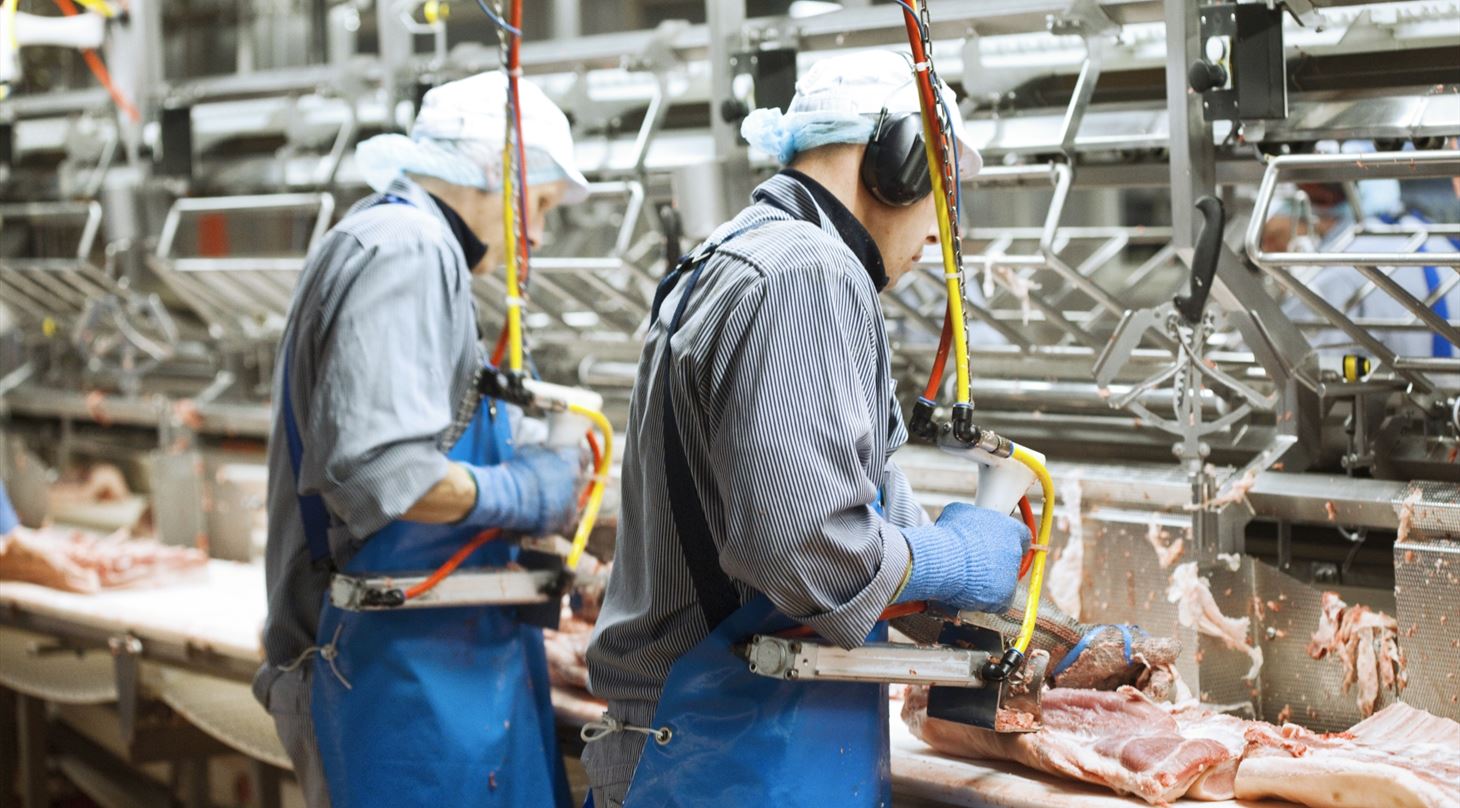
The new Food Safety Management Tool helps the meat industry control bacterial contamination
September 2019
At Cibus Tec 2019, DMRI is launching a new management tool for monitoring the hygiene level in slaughterhouses and on production sites. The tool offers a systematic review of the hygiene level for overall improvement and thereby control of unwanted bacteria.
Bacteria e.g. Salmonella, Listeria and E. coli are from time to time a problem in the food industry because these bacteria can cause illness to the consumer.
“The international meat industry has become more aware of these problems and is looking for solutions to improve the hygiene level. By introducing the Food Safety Management Tool, we offer the industry a well-documented solution that can help maintain focus on production hygiene, cleaning processes and the handling of carcasses which are the critical areas of contamination,” says Claus Hindborg Kristensen, Project Manager, Food Safety, DMRI.
The Food Safety Management Tool is launched at Cibus Tec 2019, and the systematic approach of the tool can be used in both slaughterhouses, meat production sites and food production plants in general.
Customized check lists
The tool is based on verified check lists that help slaughterhouses and production sites identify critical areas and subsequently implement continued and systematic monitoring of the hygiene level.
"The monitoring of the current hygiene level during slaughter or meat production as well as the quality of the cleaning performed after the last shift will identify weak links. The tool is based on check lists that are customized for each production site, and we train and educate key persons in using the tool, so they can perform the monitoring themselves day by day or month by month,” says Claus Hindborg Kristensen.
The human factor
The ongoing focus on hygiene is the key to control unwanted bacteria. Although procedures have been written down and are known to the employees, they are not always complied with.
“We are all creatures of habit, and when you perform the same procedures every day, you might not always follow protocol. By visually observing e.g. how an operator handles a critical situation like faecal contamination or disinfection of the knife between each carcass, you can get a full view of the hygiene level,” explains Claus Hindborg Kristensen.
Based on many years of experience
The Food Safety Management Tool is developed based on many years of experience in supporting the Nordic meat industry. Today, the Danish pork industry is one of the largest exporters in the world and is recognized for the high level of food safety.
“In Denmark, we have continuously worked with improving hygiene levels for many years, and therefore we know how bacteria travel around a production plant. We have found that production hygiene and the subsequent cleaning process are the two key factors that have a critical effect on hygiene, shelf life and food safety, and this also applies for the food industry globally,” says Claus Hindborg Kristensen.
Meet DMRI at the Pavilion of Denmark in Hall 6 Booth F056.
Capture: At Cibus Tec, DMRI is launching a new Food Safety Management Tool for monitoring the current hygiene level in slaughterhouses and meat production sites in order to improve the overall hygiene level and control sources of bacterial contamination.